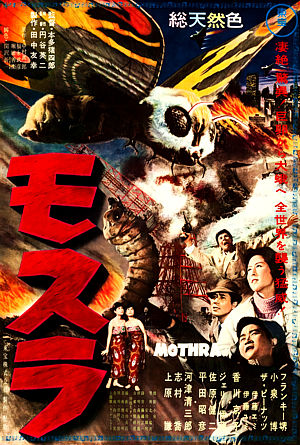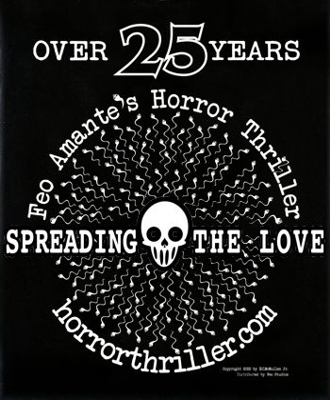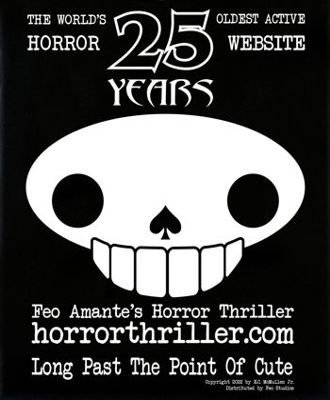 |
 |
Review by E.C.McMullen Jr. |
|

MOTHRAakaMosura- 1961Japan Release: July 30, 1961 USA Release: May 10, 1962 Toho, Columbia Pictures Rated: NR |
|||
This is a review of the original Japanese version, MOTHRA aka MOSURA.
If/When you watch this in the original Japanese with subtitles, remember that Japanese pronounce their "R"s either like D in GOJIRA or L in MOSULA.
Understand that I'm no expert in Japanese linguistics, I just watch a lot of Kaiju.
You might go so far as to say I'm Koo-Koo for Kaiju.
I make no excuses and I'm in good company, as MOTHRA is a favorite movies of Directors like Martin Scorsese (who adores most Toho Kaiju movies) and Guillermo Del Toro (who loves monsters and Big Horror in general).
In 1961, a kitschy Kaiju appeared in Japanese theaters and made a splash on U.S. shores the following year. It featured a giant moth. Not actually evil, or even bad (like Godzilla, who was still one bad motor scooter at this time). Instead, Mothra was looking for LOVE!
Well, that's what they called it in the U.S., But in Japan MOTHRA is out to protect the people of Infant Island.
In either case, as a lovelorn moth or a protector, when you have a giant winged creature who creates hurricane force winds when it flies, even love can hurt.
Because this is Toho Pictures and is Directed by Ishirô Honda (GODZILLA [1954], BEAST MAN SNOW MAN, RODAN, THE WAR OF THE GARGANTUAS, DESTROY ALL MONSTERS, THE MYSTERIANS, THE H-MAN, THE GREAT MONSTER BARAN, BATTLE IN OUTER SPACE, THE HUMAN VAPOR, MOTHRA, KING GORATH, KONG VS. GODZILLA, VARAN THE UNBELIEVABLE, ATTACK OF THE MUSHROOM PEOPLE, SPACE MONSTER DAGORA, GHIDORAH: THE THREE-HEADED MONSTER, FRANKENSTEIN CONQUERS THE WORLD, GODZILLA VS. MONSTER ZERO, ALL MONSTERS ATTACK, YOG: THE SPACE AMOEBA, MECHAGODZILLA VS. GODZILLA), the action begins with a ship at sea. It's a stormy night and the waves are bashing a ship broadside.
The centuries old method of keeping your ship from being swamped in a situation such as this is to turn your bow into the waves. The oncoming waves will push your ship back, but barring some superwave they shouldn't swamp you or turn your ship on its side or worse, upside down. Granted its a typhoon and no method is perfect, but a ship taking hits broadside is the worst position. Yet the Captain (Yoshio Kosugi: THE MYSTERIANS, THE HUMAN VAPOR, KING KONG VS. GODZILLA, MOTHRA VS. GODZILLA, GHIDORAH THE THREE-HEADED MONSTER, FRANKENSTEIN VS BARAGON) won't hear of any tried and true practices, allows his ship to take on water. Then he thinks to ask were they are exactly. The answer is that they are dangerously close to the deadly radioactive Infant Island!
"GASP! Infant Island?!?"
How close? CRUNCH! "Our ship just ran aground, sir!"
"By golly that IS close!" and the insufferable idiot orders his crew to abandon ship.
The next day after the storm has passed, sea and air search and rescue discovers four survivors alive and well on Infant Island and fortunately, the incompetent Captain isn't one of them. This is astounding to all concerned as Infant Island was a test-bed for atomic bombs.
The survivors are brought back to Japan as doctors and scientists are mystified that the sailors are neither radioactive themselves, nor are they suffering from radioactive contamination. The men are questioned but have no answers.
At this moment, newspaper photographer, Michi Hanamura (Kyôko Kagawa) takes a picture. The government head honcho demands she turn over her film, but Michi has an ace up her sleeve: Though a woman, she's with a male reporter. The reporter who snuck her into the secret meeting is revealed. Do the government researchers... call security? Throw them out? Have them arrested?
No, the attitude is "Ha! Ha! Ha! Good one! You got us! Well, too late to do anything about it now."
The reporter's name is Senichiro 'Sen-chan' Fukuda (Furanki Sakai: SEKAI DAISENSÔ), he works for Nitto News (pronounced Neato) and his nickname is "Snapping Turtle" , because he never lets go of a story (in the movie his name is pronounced Sen but subtitled to Zen, even when the actors are clearly and repeatedly calling out "Sen-Chen!". "Snapping Turtle" is pronounced Spone).
One of the survivors suddenly remembers something and openly ponders if, just maybe mind you - he's spit-balling here - but perhaps the red juice the natives offered them somehow protected them from the radiation?
This only raises more questions.
"The hell?!? Natives?!? A hydrogen bomb was tested on that island just last year! There are PEOPLE living on radioactive Infant Island?"
Gadzooks! We have to go see these people!
Before the researchers can go, Japan first has to get permission from the country of Russiamerica (Ahem... that's how everyone pronounces it. It's spelled Rolisican in the subtitles). Rolisican agrees to a joint research party with Japan but only if its led by the mysterious Kurâruku Neruson (pronounced Nerson).
Who is he?
He's the man in charge. There will be no reporters.
What's his background?
He's the man in charge. He'll be bringing armed security.
Japan agrees to this without question, although the scientists have plenty of questions.
Sen-chan of Nitto also has questions and sneaks aboard the research vessel.
Where he's promptly caught and threatened with death by Mr. Neruson (Jeri Itô: MESSAGE FROM SPACE). Nerson/Neruson - whatever - has a pistol and threatens to murder Sen-chan in his cabin. In fact, he starts laughing about it. With his one raised eyebrow and his bad teeth smirk, he begins rising into the pitch of near psychotic laughter, which attracts the timely appearance of second lead scientist, Dr. Shin'ichi Chûjô (Hiroshi Kozumi: GODZILLA RAIDS AGAIN, GIGANTIS THE FIRE MONSTER, MATANGO, ATRAGON, MOTHRA VS. GODZILLA, DOGORA, GHIDORAH THE THREE HEADED MONSTER, GODZILLA VS. MECHAGODZILLA, THE RETURN OF GODZILLA / GODZILLA 1985, GODZILLA: TOKYO S.O.S.).
Neruson tries to give him the brush off with the same pistol he was about to use on Sen-chan but thinks better of it. It's one thing to kill a stow-away on a security mission, but the second in command of your research team? On the first day?
People might talk.
So both men escape with their lives but things are only going to get worse from here.
The team arrive at the island, find a rock with cryptic writing, a man-eating plant, and two 12 inch gals who we will know as Shobijin, or Fairies, who speak in a foreign language that sound like notes on an electric keyboard. Neruson, with his one arched eyebrow and smug smirk, insists on kidnapping the Fairies and is willing to have his gunmen slaughter the whole Japanese team of researchers if they've got a problem with it. Suddenly the away team are surrounded by human-sized natives who are knocking rocks. No problem, Neruson has enough bullets for everybody!
Unfortunately this action even appalls the Russiamerica - er - Rosicrucian Rolisican research team. Apparently Neruson can't slaughter his own research team.
People might talk.
So with an arched eyebrow and pouty bottom lip, he puts the gals back and backs down. Life ain't easy for a thug.
Once everyone has returned to the ship, Neruson says the research is over and that's that. Back home we go.
All the Japanese people go back to Japan. Then Neruson and his thugs return to the island, slaughter all the natives except for the 1 foot gals, who they re-kidnap, and make their way back to the ship.
However, one of the natives lived just long enough to pray to a giant egg that he called Mosula.
Sen-Chen, who up to this time had the uneven character development of swaying between a comedy-relief Jar-Jar Binks and an interesting and dedicated journalist (As unbelievable in this era as Godzilla, but apparently such creatures lived in the mid-20th Century. Then again, this movie IS a fantasy), is busy investigating Neruson with the help of Dr. Chûjô. As they make their discoveries they go to a nightclub - a nigtclub - where Neruson has the fairies enslaved and forced to perform a musical act.
Neruson isn't even a city crime lord. He's a mere crime boss of his neighborhood - if that!
And he holds away over the entire super power that is Rolisican?
The Hell?
Look! I can accept giant insects but a one club crime boss in a single city that controls a superpower nation and he uses his money and influence to make... Billions every week? No.
Millions every week? No. He uses his resources to run a Carnival sideshow every night, making thousands a week.
So the Infant Island Shobijins sing every night and the song they sing is Mosula. Nobody has any idea what they're singing about but aren't they cute and exotic? Dr. Chûjô and Sen-Chen get into the club, see what's happening, and even they don't understand. We, however, discover that their song is telepathic and reaches all the way to Infant Island where some natives still exist. They Infant Island the hell out of the Mosula song as they dance for a giant egg.
Neruson doesn't realize it, but with every show the Shobijins are calling for a Kaiju craptastrophe to rain upon his head!
Okay, cut to the chase: Egg hatches, a Mosula caterpillar is born, swims to Japan, and goes on a rampage. Nothing can defeat it. It makes its indestructable cocoon, goes through metamorphosis, becomes the flying MOTHRA and now the shit really hits the fan!
MOTHRA was written as three acts by three different writers, each working on their own act. Starting things off was Senichi Sekizawa (FEARFUL ATTACK OF THE FLYING SAUCER, THE GREAT MONSTER BARAN, BATTLE IN OUTER SPACE, DENSO NINGEN, KING KONG VS. GODZILLA, VARAN THE UNBELIEVABLE, ATRAGON, SPACE MONSTER DAGORA, GHIDORAH: THE THREE-HEADED MONSTER, GODZILLA VS. MONSTER ZERO, GODZILLA VS. THE SEA MONSTER, SON OF GODZILLA, ALL MONSTERS ATTACK, GODZILLA VS. GIGAN, GODZILLA VS. MEGALON, GODZILLA VS. MECHAGODZILLA), who provided the Fantasy/legend/lore that we need to know about MOTHRA.
That was important to Toho studios because they were out to attract more families in general , and more women in particular (they were caught off guard by both the popularity of Godzilla toys as well as their staying power). If single women want to go to a movie they'll bring their friends or dates: that's two tickets and up. If Mothers want to go they'll bring their kids. Also two or more tickets.
If guys want to go, they'll just go and that's only one ticket: especially for the kind of nerds who would go see a Kaiju movie.
So MOTHRA was expressley for an entirely new audience and Toho wanted it so bad that this became the most expensive Japanese movie ever made up to that point. Senichi had a hand in writing nearly every Godzilla movie after MOTHRA. Not necessarily a good thing as Senichi is directly responsible for making the GODZILLA movies progressively sillier, but also more "family friendly".
I stand by the word "silly" and not "stupid" because stupid is unkind and, the fact is, I fell in love with Senichi's whacked-out Godzilla movies when I was a tiny house ape. As a full grown primate who never lost that childhood filter, I can watch the original Japanese versions of the first two Godzilla movies and see how cool they were in their own right (and consider what a loss it was that the movies didn't maintain a slightly more mature feel and nature). American money in box office sales made the difference.
Toho saw how the Hollywood butchered movies were doing in the U.S. and altered their movies accordingly. But the Hollywood-ized dumbed down versions of two Godzilla movies only made money because American audiences weren't legally allowed to see how much better the original Japanese versions were (It wasn't just Godzilla movies either! Hollywood dimbulbs, convinced that they were genuises and everyone else was beneath contempt, actually thought they had to dumb down movies about giant monsters. Was the concept REALLY too far over the heads of 1950-70s Hollywood studio bosses, too sophisticated, for them to get a grip on it? Sheesh!). The original Japanese version of GODZILLA wasn't released in the U.S. until 2004. What's more, after over 60 years, no correctly English dubbed Japanese version of GODZILLA exists to this day in 2024.
Directed by Ishirô Honda (GODZILLA [1954], BEAST MAN SNOW MAN, RODAN, THE WAR OF THE GARGANTUAS, DESTROY ALL MONSTERS, THE MYSTERIANS, THE H-MAN, THE GREAT MONSTER BARAN, BATTLE IN OUTER SPACE, THE HUMAN VAPOR, KING GORATH, KONG VS. GODZILLA, VARAN THE UNBELIEVABLE, ATTACK OF THE MUSHROOM PEOPLE, SPACE MONSTER DAGORA, GHIDORAH: THE THREE-HEADED MONSTER, FRANKENSTEIN CONQUERS THE WORLD, GODZILLA VS. MONSTER ZERO, ALL MONSTERS ATTACK, YOG: THE SPACE AMOEBA, MECHAGODZILLA VS. GODZILLA), who was starting to have his fill of making Kaiju, and was eager to pass the baton off to someone else. Honda was looking for projects that would be more artistically expressive, but it was too late. His Kaiju was wildly successful and nobody could see him as the guy to helm any other genres. Even if he could, his name in the credits would color the expectations of the potential audience.
There was a time when Ishirô Honda had aspirations of being the next Akira Kurosawa, who was his lifelong friend. Eventually Akira invited Honda to work with him on his movies like Kagemusha and Ran, but resetting his reputation after Kaiju was not to be. Instead of becoming another Kurosawa of drama, Honda became the Ishirô Honda of Kaiju, and that's not second place: It's a distinct mountain peak in its own right.
Three Shriek Girls



This review copyright 2024 E.C.McMullen Jr.

|
| GET SOME CLOTHES ON | |
FEO AMANTE'S HORROR THRILLERCreated by:E.C.McMullen Jr. FOLLOW ME @ |
| Amazon |
| ECMJr |
| Feo Blog |
| IMDb |
| Stage32 |
| Twitter X |
| YouTube |
| Zazzle Shop |

